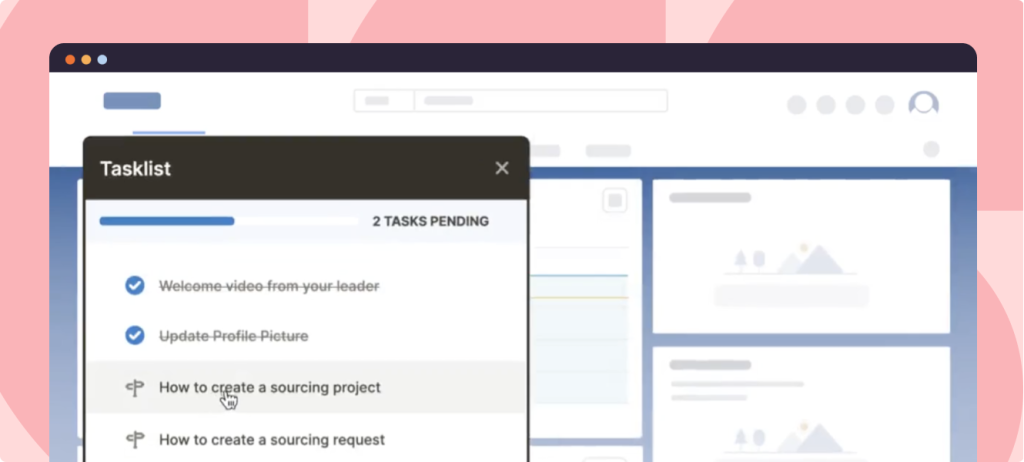Whether it’s a shift in enterprise strategy, the adoption of new technology, or a large-scale restructuring initiative, the success of any organizational digital transformation depends on the effectiveness of its implementation.
Change implementation is not just about introducing new processes or systems—it’s about ensuring these changes are embraced, executed, and sustained across the organization. In this article, we explore some effective change implementation strategies that drive seamless and lasting transformation.
From understanding the psychology of change management to navigating resistance, this article aims to provide valuable insights for leaders and change agents seeking to navigate the ever-evolving landscape of business and innovation.
What Is Change Implementation?
Change implementation is the process of translating planned changes or initiatives into action. It involves executing the strategies and action plans developed during the change planning phase, allocating necessary resources, communicating effectively with stakeholders, and monitoring progress.
Change implementation is a pivotal step in the change management process, aiming to bring about the desired changes in processes, structures, systems, or behaviors. It requires careful coordination, adaptability, and engagement to ensure that the organization successfully adapts to new conditions, achieves its goals, and realizes the anticipated benefits of the change.
Are you starting a change initiative? Download our pack of six change management templates to kick-start your change initiatives.
✓ Thank you, the checklist will be sent to your email
Strategies for Successful Change Implementation
Here are some change implementation strategies to help support your change initiatives.
Understanding the need for change
The first step in successful change implementation is understanding the drivers behind the need for change. These reasons could stem from various triggers:
- Market demands: Changes in customer expectations, competition, or industry trends.
- Technological advancements: Adoption of emerging tools and systems to improve efficiency.
- Organizational growth: Expanding operations, entering new markets, or scaling resources to meet increased demand.
Identifying these factors ensures the organization understands the “why” behind the change, creating a sense of urgency.Equally important is recognizing the consequences of inaction. Organizations must consider:
- Potential loss of competitive advantage.
- Declining customer satisfaction or loyalty.
- Inefficiencies or increased costs from outdated processes.
A thorough risk assessment helps justify the change and provides a compelling argument to stakeholders.
Building a strong foundation for change
Leadership commitment is critical for success. Leaders set the tone by actively supporting and advocating for the change. They should:
- Communicate the vision and benefits of the change.
- Act as role models by embracing new behaviors or processes.
- Allocate resources and make decisions aligned with the change initiative.
Without leadership buy-in, employees may doubt the change’s importance or lack the motivation to adapt. Understanding and engaging stakeholders is another foundational step. This involves:
- Identifying key stakeholders and their level of influence.
- Analyzing their concerns, interests, and potential resistance.
- Tailoring engagement strategies to involve them in the process, ensuring their support and cooperation.
A well-executed stakeholder analysis prevents roadblocks and builds a coalition of supporters.
Creating a change management plan
Creating a structured change management plan that develops a structured roadmap with clear milestones that:
- Breaks the initiative into manageable phases.
- Sets measurable milestones to track progress.
- Outlines deliverables for each phase.
This structure ensures the organization stays on track and can celebrate small wins. Adequate resource allocation also prevents delays and ensures smooth execution. You should identify necessary resources that will support your change implementation, such as:
- Financial resources to fund the initiative.
- Human resources for executing tasks and managing transitions.
- Technological tools to streamline implementation.
Establishing a timeline is also critical for successful change implementation. Be sure to define each milestone in your change timeline, including:
- Defining a clear start and end date for each phase.
- Prioritizing phases based on urgency and impact.
- Incorporating buffer periods to address unforeseen challenges.
Clearly defining objectives and goals
Clear objectives provide direction and align efforts across the organization. The SMART goals framework is a goal-setting exercise that simplifies the goal-setting process for team managers by creating goals based on five criteria areas:
- Specific: Clearly outline what the change seeks to achieve.
- Measurable: Use KPIs to track progress and success.
- Achievable: Ensure goals are realistic, given available resources.
- Relevant: Align objectives with organizational priorities.
- Time-bound: Set deadlines to maintain momentum.
For example, a technology adoption goal could be: “Increase employee proficiency with the new CRM system to 85% within six months.”
✓ Thank you, the checklist will be sent to your email
Effective change communication
Building trust starts with transparency. Effective change communication must be a top priority for change leaders as it helps employees understand:
- The purpose of the change (e.g., enhancing efficiency, staying competitive).
- The benefits it will bring to individuals and the organization.
- The risks of not adapting to the change.
This context fosters buy-in and reduces resistance.
Remember, different audiences require different communication methods. Therefore, utilize different methods for change communication:
- Emails and newsletters for broad updates.
- Town halls for interactive Q&A sessions.
- Internal platforms for sharing resources and announcements.
- One-on-one meetings to address specific concerns.
Effective change communication is the bridge that connects leadership’s vision with the workforce’s execution, ensuring that everyone is on board and moving forward together.
Deploying change champions and advocates
Change champions are influential employees who support and promote the change. Their roles include:
- Encouraging peers to adopt new processes or tools.
- Addressing concerns and dispelling misinformation.
- Acting as liaisons between leadership and teams to ensure alignment.
Deploying advocates fosters grassroots support and increases engagement across the organization.
Assessing and mitigating resistance
Resistance to change is a natural and expected reaction among employees, often stemming from fear of the unknown, perceived job insecurity, or skepticism about the change’s benefits. Left unaddressed, resistance can slow down or even derail the implementation process. However, understanding the sources of resistance and addressing them proactively can transform opposition into support, creating a smoother pathway for organizational transformation.
One effective method for identifying resistance is Force Field Analysis. This approach helps organizations analyze the factors that drive and hinder change. In this method:
- Forces for the change (drivers) and forces against the change (barriers) are listed.
- Each force is evaluated for its strength and impact on the initiative.
- Organizations prioritize addressing the strongest and most influential barriers.
For example, if employees resist new technology because they fear a lack of competency, this can be identified as a significant “restraining force.” Simultaneously, factors like leadership support or operational efficiencies can act as “driving forces” to be reinforced.
Once the sources and root causes of resistance are identified, the organization can take targeted actions to address them:
- Use storytelling to illustrate the benefits and success stories of similar changes.
- Address specific misconceptions or fears directly to reduce uncertainty.
- Provide tailored training programs to bridge knowledge or skill gaps.
- Conduct one-on-one discussions or team workshops to understand employee concerns.
- Allow employees to participate in shaping the change, giving them a sense of ownership.
- Assign mentors or change champions to act as guides and advocates.
Training employees
Training employees for change is a crucial step in change implementation. It equips them with the knowledge and skills needed to adapt effectively to new processes, technologies, or behaviors. Proper training helps reduce anxiety and resistance, empowers employees to embrace change, and ensures a smoother transition.
A digital adoption platform like Whatfix DAP plays a significant role in training employees by providing on-demand, interactive, and personalized training and support directly within the software or application employees use. It offers step-by-step guidance, tutorials, and real-time assistance, allowing employees to learn and apply new processes seamlessly.

→ Guide users through complex apps with contextual, role-based in-app guidance.
→ Support users at the moment of need with AI-powered Self Help and embedded workflow assistance.
→ Analyze user engagement to identify friction points and optimize business processes.
Furthermore, with Whatfix Mirror, you can easily create replica sandbox environments of enterprise software applications. This creates an interactive, duplicate application environment for your end-users to learn with hands-on experiences on your real workflows without impacting your company data and performance.

Monitoring progress and feedback loops
Monitoring ensures the change is on track and allows for adjustments. Key monitoring practices include:
- Regular progress reviews using KPIs and milestones.
- Setting up feedback loops to gather input from employees.
- Making iterative improvements based on real-time data.
Continuous monitoring helps maintain alignment with goals and addresses emerging challenges.
Launching small-scale pilot launches for change
Pilot launches are a low-risk way to test changes. They allow organizations to:
- Identify potential issues in a controlled environment.
- Collect feedback and refine strategies.
- Build confidence among employees before a full-scale rollout.
This phased approach minimizes disruptions and ensures readiness for larger implementations.
Documenting and sharing success stories
Celebrating and sharing wins helps reinforce the value of change. Success stories:
- Highlight the benefits achieved (e.g., increased efficiency or improved morale).
- Motivate employees to stay committed to the change.
- Serve as case studies for future initiatives.
Documenting successes fosters a culture of continuous improvement.
Sustaining the change
Sustaining change requires ongoing efforts to embed new behaviors and processes into the organization’s culture. Key actions include:
- Updating policies and procedures to reflect the change.
- Providing continuous training and support.
- Recognizing and rewarding employees who embody the change.
By reinforcing the change over time, organizations can ensure long-term success and resilience.
Related Resources
What Is the Cost of a Failed Change Implementation?
A failed change implementation can result in substantial expenses and heightened risk exposure for an organization. The financial and operational impacts are felt on both an organizational level and a program level, far exceeding the initial investment in the core change initiative. Below is a breakdown of the costs, with additional pointers highlighting the various implications:
Organizational-Level Costs
- Reduced employee productivity: Resistance to poorly implemented changes, confusion about new processes, or lack of adequate training can lead to significant drops in productivity, affecting overall performance.
- Employee turnover costs: Frustration with failed initiatives may drive employees to leave the organization, leading to high costs associated with recruitment, onboarding, and lost institutional knowledge.
- Costs due to poor work quality: Disruptions caused by ineffective change can result in errors, lower-quality outputs, and a decline in customer satisfaction, damaging the organization’s reputation.
- Loss of employee morale and engagement: Failed change initiatives can cause frustration, change fatigue, and disillusionment, leading to long-term disengagement and reduced collaboration among teams.
Program-Level Costs
- Delayed project costs: Failure to meet deadlines or roll out initiatives on time can lead to increased expenses, missed timelines for market entry, and additional effort to catch up.
- Design rework costs: Poorly executed changes often require redesigning or reworking solutions, leading to additional costs for labor, tools, and testing.
- Resource waste: Resources such as time, effort, and tools invested in the failed initiative are wasted, with no return on investment.
- Budget overruns: Failed implementation may necessitate additional funding for reallocation, problem-solving, or reattempting the change, resulting in unplanned budgetary expenses.
- Training and retraining costs: Failed change often necessitates additional rounds of training and retraining, creating further costs and delays for employee readiness.
Challenges of Effective Change Management Implementation
Here are some of the challenges associated with change management implementation.
- Insufficient training and resources: Without adequate training and resources, employees may struggle to adapt to new systems or processes. This results in frustration, inefficiency, and errors. Providing tailored training, tools, and support is essential to building employee confidence and ensuring a smooth transition.
- Change fatigue: Frequent or poorly managed changes can overwhelm employees, leading to burnout and disengagement. Organizations must pace changes strategically, communicate effectively, and celebrate small wins to sustain motivation and minimize fatigue.
- Overlooking long-term sustainability: Many change initiatives focus on immediate implementation but fail to integrate new processes into the organization’s culture and operations. This oversight can lead to regression or abandonment of the change. Ensuring sustainability requires continuous reinforcement, regular reviews, and embedding changes into standard practices.
Change Clicks Better With Whatfix
Successful change management isn’t just about introducing new business processes or implementing new technology—it’s about ensuring employees adopt them effectively. Whatfix empowers organizations to execute seamless change projects by supporting users at every stage of the transition.
- Whatfix Mirror accelerates end-user onboarding with hands-on training in a sandbox environment, allowing employees to learn by doing before they work in the live system. You can also conduct user acceptance testing (UAT) and beta testing, gathering real-time feedback to uncover issues, optimize processes, and ensure a smooth go-live – all in your sandbox user testing and training environment, without requiring technical resources.
- Whatfix DAP provides in-app guidance to help users master core tasks, complex workflows, and infrequent processes without disrupting their productivity. Self Help integrates your knowledge base and support documentation directly into your enterprise applications, offering just-in-time assistance and support in the flow of work. With in-app surveys, you can continuously collect user feedback to refine and enhance the experience.
- Whatfix Product Analytics gives you deep insights into how employees complete tasks, where they struggle, and whether they’re adopting new workflows correctly. By identifying friction points—such as incorrect steps or errors in data entry—you can implement a data-driven improvement plan, reinforcing success with updated guidance and training.
With Whatfix, change isn’t disruptive—it’s intuitive. Equip your workforce with the right tools to adapt seamlessly, reduce resistance, and drive lasting digital transformation. Learn how Whatfix can power your change management strategy, and request a demo today!






